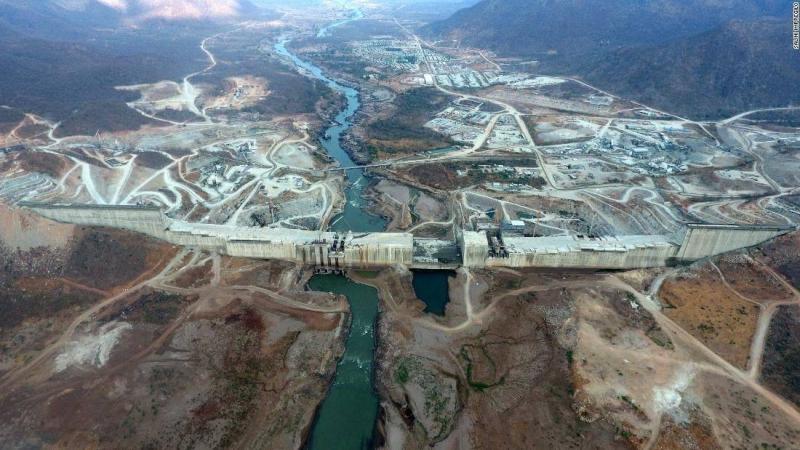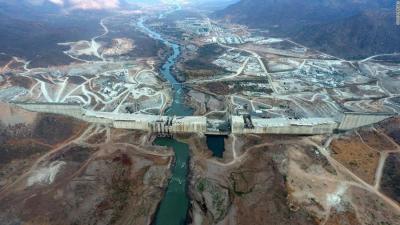In recent hours, extensive meetings regarding the Grand Ethiopian Renaissance Dam issue took place in the Egyptian capital. President Abdel Fattah El-Sisi met with Jeffrey Feltman, the U.S. special envoy for the Horn of Africa, yesterday to discuss developments related to the dam. Feltman confirmed that the U.S. administration is serious about resolving this sensitive issue due to its significant importance to Egypt and the region, which requires reaching a fair and comprehensive settlement. El-Sisi emphasized Egypt's flexible approach in dealing with this issue over the years in various negotiation tracks, which has always been based on the pursuit of a fair, balanced, and legally binding agreement that meets the interests of Egypt, Sudan, and Ethiopia, while considering Egypt's rights and interests and protecting its water security.
He explained that all efforts made during the negotiation process have not resulted in the desired agreement due to the lack of political will on the part of the other party.
In this context, Foreign Minister Sameh Shoukry and Dr. Mohamed Abdel Aty, Minister of Water Resources and Irrigation, also met with the U.S. envoy to review the history of the dam file since Ethiopia began its construction without consulting the downstream countries, up to the ongoing negotiations on the filling and operation rules, which have failed due to Addis Ababa's obstinacy and its rejection of all technical proposals regarding the filling and operation rules presented by Egypt during the negotiations or prepared by international mediators that Egypt accepted, including the agreement reached during negotiations facilitated by the U.S.
So, what is the current status at the dam? To what extent has Ethiopia progressed in the construction and elevation of the middle section in preparation for the second filling? And is what is currently being done sufficient to store the announced quantity of 13.5 billion cubic meters, in addition to the 5 billion cubic meters stored since last year?
According to the latest satellite images taken until the evening of the day before yesterday, the current construction at the dam is insufficient to store the planned amount of 13.5 billion cubic meters, as Ethiopia is drying and elevating the middle section in preparation for storage.
Egyptian expert Dr. Abbas Sharaki revealed to "Al Arabiya.net" that the progress rate in elevating the middle section is very slow, which increases the likelihood that the two lower turbines installed by Ethiopia at the dam will not be ready. Consequently, this further confirms that Ethiopia will not be able to complete the second filling of 13.5 billion cubic meters. He added that under these circumstances, Ethiopia will not be able to fully elevate the middle section, and what might be accomplished would only suffice to store several billions of water, reaching 3 to 4 billion cubic meters, which aligns with Ethiopia’s political, rather than technical, objectives for the second filling.
He stated that Ethiopia's actions are intended to achieve the government's political objectives in front of its citizens to gain the necessary support for the upcoming elections, and to support Prime Minister Abiy Ahmed. He further noted that the current situation at the dam does not allow for any storage, but it is expected to raise and elevate the middle section slightly over the coming weeks. However, even if it is raised and elevated, it will not be completed to accommodate 13.5 billion cubic meters due to the limited time before the flood season. Rather, it can only be elevated to accommodate about 4 billion, which is insufficient to operate the two existing turbines for electricity generation throughout the year, but only for several months.
The Egyptian expert concludes that the current situation at the dam confirms that Ethiopia is taking advantage of the situation and escalating its rhetoric and obstinacy for political reasons, particularly due to the elections. He asserted that it is difficult to achieve storage this year, and that even if it manages to raise the middle section, it will only be able to store 4 billion cubic meters.




